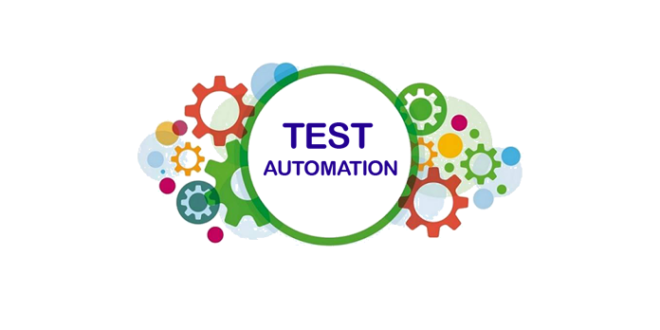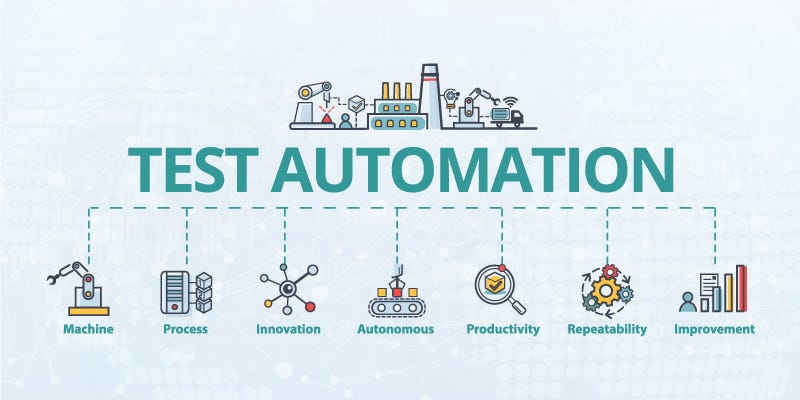The Importance of Automation Testing in Agile Growth Settings
The Importance of Automation Testing in Agile Growth Settings
Blog Article
From Guidebook to Automated Testing: A Comprehensive Overview to Transitioning Smoothly and Effectively
In the realm of software application testing, the shift from manual to automated processes has actually come to be a progressively crucial transition for companies seeking to improve effectiveness and precision in their screening practices. The journey from guidebook to automated screening is not without its difficulties, but when come close to strategically and with a clear strategy in mind, the advantages can be considerable.
Benefits of Automated Testing
Automated screening offers various benefits, improving performance and accuracy in software application growth processes. One key advantage is the considerable reduction in screening time. Automated examinations can be run all at once on numerous gadgets and running systems, drastically quickening the screening stage compared to manual testing. This boosted performance permits for faster comments on the top quality of the software, allowing programmers to identify and resolve concerns quickly.
Additionally, automated testing makes sure a greater level of precision in discovering problems. Uniformity in testing is also improved, as automated examinations implement the same steps precisely each time they are run.
Choosing the Right Devices

Firstly, evaluate your requirements and goals. Recognize the extent of your task, the modern technologies involved, and the skill collection of your group. This evaluation will certainly aid you identify the capabilities and features you require in your testing tools.
Second of all, take into consideration the compatibility of the devices with your existing systems and processes. Seamless combination with your present software development lifecycle is necessary to guarantee a smooth transition to automation.
Additionally, assess the scalability and versatility of the devices. As your screening requires develop, the tools should be able to adapt and accommodate changes successfully.
Last but not least, consider the support and community around the devices. When implementing automated screening, durable assistance and an active customer community can offer useful resources and aid. By meticulously thinking about these elements, you can select the right devices that line up with your demands and set the phase for an effective transition to automated testing.
Writing Reliable Test Scripts

When crafting examination scripts, it is important to consider the certain requirements of the software program being examined and make sure that the scripts attend to all important capabilities. Clear and descriptive calling conventions for test manuscripts and examination situations can enhance readability and maintainability. Furthermore, incorporating error handling systems within the examination scripts can assist in identifying and dealing with problems without delay.
Moreover, arranging examination manuscripts into modular elements can enhance reusability and scalability, decreasing redundancy and improving efficiency in test script maintenance. Regular evaluations and updates to test manuscripts are crucial to maintain speed with advancing software requirements and functionalities. By complying with these concepts, testers can develop durable and efficient examination scripts that contribute significantly to the success of automated screening processes.
Integrating Automation Into Workflows
By flawlessly incorporating automated testing devices like Selenium or Appium into the software advancement lifecycle, groups can attain faster responses on code modifications, leading to quicker pest detection and resolution. This combination enables for constant screening throughout the growth procedure, ensuring that any kind of problems are identified early on, resulting in higher software top quality. Correct assimilation of automation tools requires collaboration between growth, testing, and procedures teams to establish have a peek at this site a unified workflow that enhances performance and effectiveness in providing top quality software products.
Guaranteeing a Smooth Change
Efficiently transitioning to automated testing entails careful planning and cautious implementation to take full advantage of and lessen disruptions look at here efficiency in the software development procedure - automation testing. To guarantee a smooth change, it is vital to begin by conducting a complete evaluation of the existing screening procedures and recognizing areas where automation can bring one of the most considerable benefits. Involving with all stakeholders beforehand in the process, including designers, testers, and task supervisors, is essential for garnering assistance and buy-in for the automation effort
Interaction is essential during this shift phase. Clear interaction of the objectives, benefits, and assumptions of automated screening assists to take care of any kind of resistance or issues that might develop. Additionally, providing adequate training and sources for employee to upskill in automation devices and techniques is crucial for making sure an effective transition.

Conclusion
Finally, transitioning from handbook to automated screening offers many advantages, including raised efficiency and integrity. By choosing the suitable devices, writing effective examination scripts, and integrating automation effortlessly right into process, organizations can ensure a smooth and effective transition. It is important to welcome automation as an important property in software testing procedures to enhance general top quality and performance.
In the realm of software program testing, the shift from handbook to automated processes has ended up being a significantly important transition for companies looking for to improve effectiveness and accuracy in their screening techniques. Automated tests can be run concurrently on multiple devices and operating systems, considerably speeding up the testing phase compared to hand-operated testing. Consistency in testing is also improved, as automated tests perform the same actions exactly each time they are run.To make sure the successful execution of selected go to my blog testing tools, the production of effective test manuscripts plays a crucial function in verifying the functionality and efficiency of automated processes - automation testing. By complying with these principles, testers can develop effective and robust examination scripts that contribute dramatically to the success of automated screening processes
Report this page